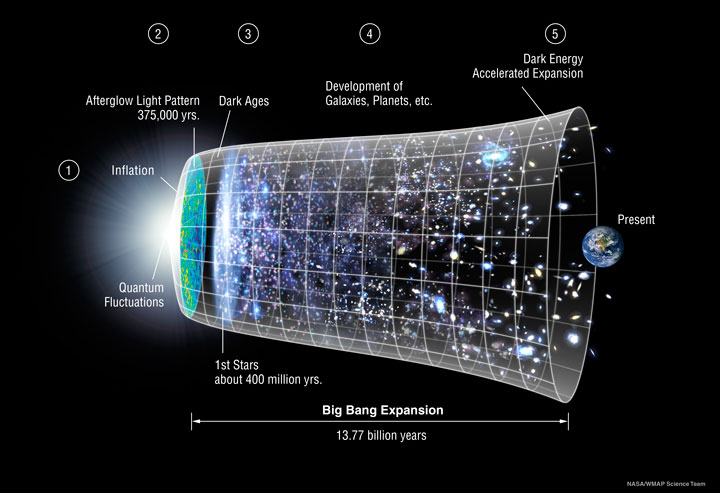

Graphic History to CosmologyIntroductionModern cosmology is rooted in the early observations of an expanding universe (Hubble 1929) and the nearly uniform 3K cosmic microwave backround (CMB) radiation thought to result as a consequence of the Big Bang (Penzias & Wilson 1965). Truly data-driven cosmology is a relatively recent luxury, made possible within the last 2-3 decades by observational advances. As observations have accumulated to help refine or reject theoretical predictions, a consensus or "standard" 6-parameter Cosmological-constant (Lambda - Λ) Cold Dark Matter (CDM) model has been successfully applied to the interpretation of a range of cosmologically-oriented observations. The content presented here is designed to give basic background for understanding ΛCDM, and to summarize our current knowledge of selected ΛCDM parameters which characterize our cosmological understanding of the universe, as interpreted through this model. ContentWe divide our discussion into three main sections:
For purposes of brevity and legibility, we cannot show results from all sources, but we display representative values selected from the literature which span multiple datasets and methods. These graphical histories serve as a roadmap, illustrating those parameters for which there is a broad consensus, and those for which there is less agreement. The graphical histories are available for use by the public and scientific community. Community suggestions for additional parameters or data entries in these graphical histories may be sent to LAMBDA. AssumptionsThis model is a mathematical parameterization of Big Bang cosmology, as described by General Relativity and the Friedman-Lemaître-Roberson-Walker (FLRW) equations. ΛCDM assumes that the universe is composed of photons, neutrinos, ordinary matter (baryons, electrons) and cold (non-relativistic) dark matter, which only interacts gravitationally, plus "dark energy", which is responsible for the observed acceleration in the Hubble expansion. Dark energy is assumed to take the form of a constant vaccuum energy density, referred to as the cosmological constant (Λ). Standard (6 parameter) ΛCDM further imposes the constraint that space is flat (Euclidean). Contributed by the NASA / LAMBDA Archive Team. |


